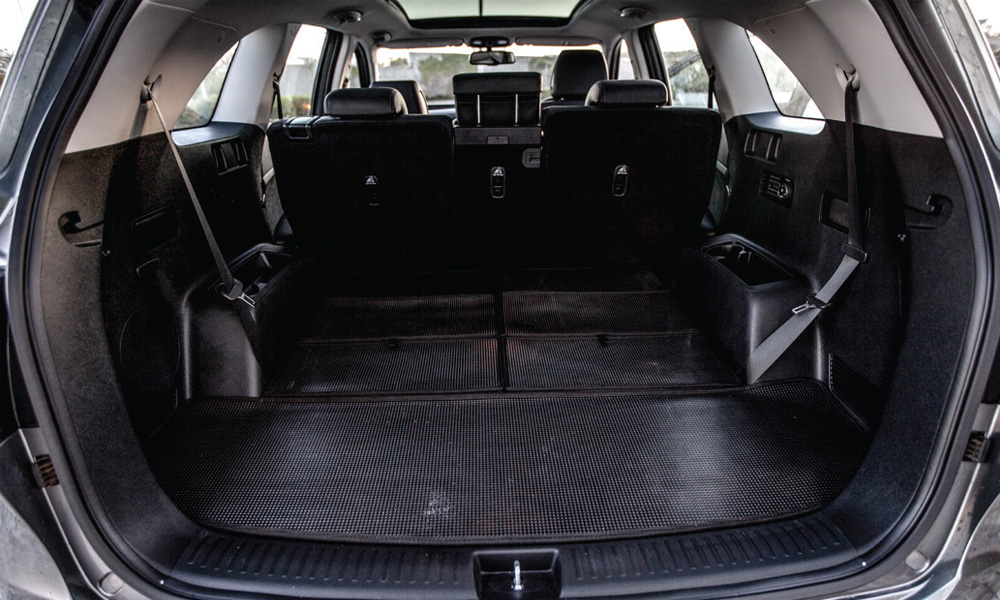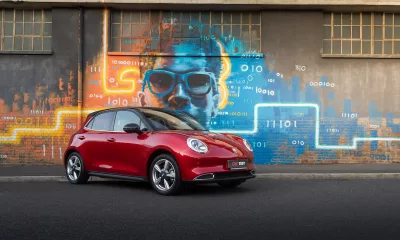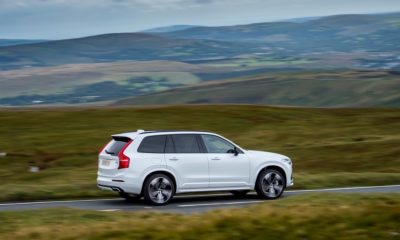THE first Sorento designed by Kia was a pukka off-roader and came equipped with a low-range transfer case. In fact, an example was recently spotted by one of our testers while it tackled the Matroosberg 4×4 trail in search of snow. It was a vehicle we got to know well, too, thanks to our esteemed former technical editor Jake Venter who had a diesel derivative as a long-term test car.
By the time generation two came along in 2009, however, it was clear that prospective Kia Sorento owners were after a more refined and comfortable vehicle whose application
was most definitely as an on-road, family-oriented SUV. And now, in its third incarnation, Kia has sought to build further on the qualities of its predecessor, plus add a further level of luxury to its local flagship offering.
From a design point of view, Peter Schreyer’s pencil has come up with another impressively neat, contemporary design that effectively disguises this big seven-seater’s bulk. Being longer, lower and a touch wider than its predecessor, the new Sorento has a sleeker, more aggressive stance that’s emphasised by a supersized interpretation of the familiar Kia “tiger nose” grille.
This top-of-the-line SX version comes with Kia’s highly regarded 2,2-litre turbodiesel that produces 147 kW and 440 N.m of torque, and is mated to an equally capable six-speed
automatic transmission. For the new Sorento, the engine has been tweaked for improved fuel efficiency to include fourth-generation fuel injection, a redesigned EGR cooler, as well as an intake manifold swirl-control valve.
You can select one of three driving modes – eco, normal and sport – and although we didn’t notice much difference between the first two settings, there was a more discernible change in sport, which also weighs up the steering. In fact, we found ourselves using sport as the default mode, not for performance reasons, but because the ‘box spent less time hunting for gears in traffic.
The Sorento’s steering is now also electrically assisted and, while this often means an artificial and somewhat wooden feel, it’s quite acceptable on this type of vehicle; the steering feel was much more convincing than what we’ve found on the smaller Korean cars.
Another notable improvement was the behaviour of the seven-seater’s suspension. The Sorento’s conventional setup (MacPherson struts with a multilink arrangement at the rear) soaks up bumps and provides for a plaint and comfortable ride. Kia’s engineers have clearly spent some time fine-tuning that setup and, even when driving the big SUV fully laden with passengers and luggage, it rode well. The 18-inch wheels are fitted with Kumho Crugen tyres that are biased towards on-road comfort, with low noise characteristics. Perhaps not ideal for off-road work, especially with a profile of 235/55, the tyres nevertheless proved satisfactory for general gravel-road driving and towing. With four-wheel-drive lock mode selected, the Kia even negotiated a fairly steep farm road with relative ease.
While the base model is front-wheel driven, has dual airbags and five seats, this pricier SX version includes as standard two extra seats, a panoramic sunroof (of which the front
section can open), four-wheel drive with a centre diff lock, curtain airbags, blind-spot detection and an electronically operated tailgate. The latter detects the presence of the key in your pocket when the vehicle is locked and opens by itself when you approach the rear of the vehicle. A warning beep lets you know that the powered tailgate is about to open, which is handy if both your hands are occupied with shopping or a heavy toolbox. If you don’t want the tailgate to open, merely move away.
The facia features soft-touch plastic with a fake stitch across the front edge. While the dash expanse is large, well-designed and laid out, one item unfortunately falls glaringly short – especially considering the Sorento’s premium product positioning: a 4,3-inch infotainment touch screen is much too small. Comically so, in fact. The buttons may be well spaced, easy to locate and of upmarket quality, but the system requires some concentration to operate, especially when you’re trying to keep your eyes on the road.
On this SX version, the driver benefits from a 10-way electrically adjustable seat, including an extended front section for knee support, a variety of possible headrest positions, plus seat- and side-mirror memory. Remote folding of the second row from the rear cargo area facilitates loading, and access to the back is via the left-hand side where the middle row’s left seat slides forward. The middle row is adjustable fore and aft, and the last row can even accommodate adults (on shorter trips).
You also get dual-zone climate control for the front passengers, while those in the rear can make use of a separate HVAC control panel. Depending on how many seats you fold down, luggage and cargo space are copious, and even with all seven seats in use, you still have 96 dm3 of luggage space left. This is made possible by the spare wheel being housed well out of the way – it’s stored under the body.
The mass of just over two tonnes is high, but – to the turbodiesel’s credit – the heft doesn’t notably affect on-road performance. We recorded a sprint time from zero to 100 km/h of 9,52 seconds. Braking times averaged out as 3,09 seconds which is also quite satisfactory.
Kia South Africa does not specify fuel consumption figures, but Kia Europe’s claims for the combined cycle test state 6,6 litres/100 km, which translates to a CAR index figure of 7,92 litres/100 km. For the record, our own standard fuel route returned a very good 7,6 litres/100 km.












